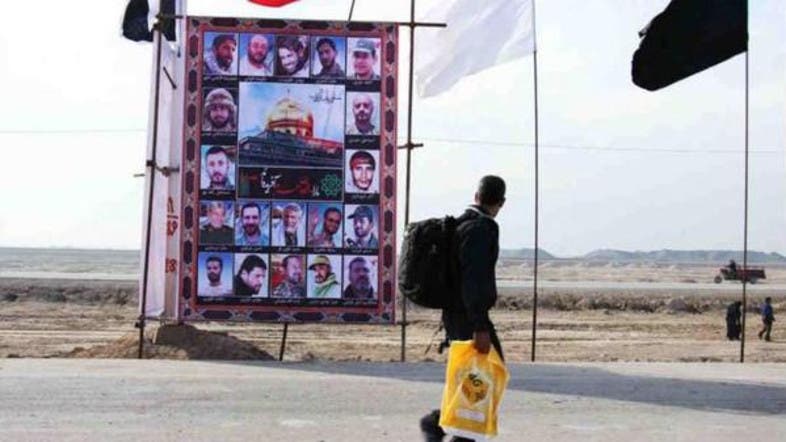Outside of all the hype of the moniker of ‘mad-dog’ and with a call sign of ‘chaos’, there is much more to be known and understood about General Mattis and what his immediate objectives will be when confirmed as Secretary of Defense.
Mattis served on the Board of General Dynamics and is a Visiting Fellow of the Hoover Institute. With his dedication and loyalty to all those that have and are wearing the military uniform, Mattis is also on the Advisory Board of Spirit of America, an organization dedicated to the success and conditions of all service personnel.
Mattis supports a two-state solution for Israel, something that will never in opinion be a viable peace alternative. The General has also given praise to John Kerry for his attempts at a Middle East peace program. While noble, that dog wont hunt either.
James Mattis will be assertive on matters with Pakistan, Iraq and Afghanistan. He tells us that under the management of Barack Obama and his weaning power from the Middle East, the United States is suffering from ‘strategic atrophy’,
It is notable that General Mattis has a personal library of more than 7000 books and while in active service published a reading list for his Marines. Indeed, Mattis is a scholar of history that includes previous wars, tactics, military leadership and results. That does tell us he has a wide and deep comprehension for understanding fully the past yielding probable and realistic estimates for the future of global equilibrium.
Related reading: France’s History of Terror, Murder and Iran
Through his military life, Mattis has encountered Iran intervention, terror, lies and tactics in countless war theaters. When it comes to Iran, the outset of his mission as Secretary of Defense will be the measured and required stipulations of the Joint Plan of Action (nuclear deal) with Iran and that will be coupled with Iran’s military influence and intervention in all the Middle East theaters of war but will also include Iran’s influence in Latin America and Europe.
All military leaders want talks, deal and diplomatic programs to be fully exhausted before the armed forces are called in to clean up messes where those other efforts have failed. For this reason, the General agrees in part with the Iran deal in spirit but there are countless violations and the financial infusion received by Iran at the hands of the United States under Barack Obama and John Kerry, supplemented by the trade and commerce plans have given rise to further concerns for Mattis. Not only does Israel feel minimized and threatened by Iran, but many other nations do as well due to the continued aggressive behavior of Iran so key Gulf Nations will have a robust role in coming months.
Iran is watching and doing so closely and their threats launched by words and deeds are likely to escalate. For Iran there is hard power and soft power and then power by proxy, such is the case in Latin America, Syria and Iraq, at least. Going back to 2008, Iran’s footprint across the world has not changed and in some regions has only been more stubborn, obvious and apparent. Dealing with the matter of Iran would begin to restore a balance of peace, or will it, can it?
Congress just cleared unanimous votes on sanctions for Iran. Iran has been proven to violate the terms of the JCPOA that included findings from German Intelligence.
With the ink barely dry on the deal between the U.S. and Iran to prevent the Islamic Republic from securing nuclear weapons, a new German intelligence document charges that Iran continues to flout the agreement. Germany’s domestic intelligence agency said in its annual report that Iran has a “clandestine” effort to seek illicit nuclear technology and equipment from German companies “at what is, even by international standards, a quantitatively high level.” The findings by the Federal Office for the Protection of the Constitution, Germany’s equivalent of the FBI, were issued in a 317-page report last week. German Chancellor Angela Merkel underscored the findings in a statement to parliament, saying Iran violated the United Nations Security Council’s anti-missile development regulations. “Iran continued unabated to develop its rocket program in conflict with the relevant provisions of the UN Security Council,” Merkel told the Bundestag.
***
Recorded on July 16, 2015 – Hoover fellows Charles Hill and James Mattis discuss the Iran deal and the state of the world on Uncommon Knowledge with Hoover fellow Peter Robinson. In their view the United States has handed over its leading role to Iran and provided a dowry along with it. Iran will become the leading power in the region as the United States pulls back; as the sanctions are lifted Iran will start making a lot of money. No matter what Congress does at this point, the sanctions are gone. Furthermore, the president will veto anything Congress comes up with to move the deal forward. This de facto treaty circumvents the Constitution.
If we want better deals and a stronger presence in the international community, then the United States needs to compromise, and listen to one another other, and encourage other points of view, especially from the three branches of government. If the United States pulls back from the international community, we will need to relearn the lessons we learned after World War I. But if we engage more with the world and use solid strategies to protect and encourage democracy and freedom at home and abroad, then our military interventions will be fewer. The United States and the world will be in a better position to handle problems such as ISIS.




